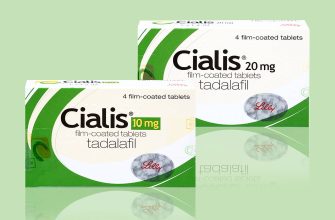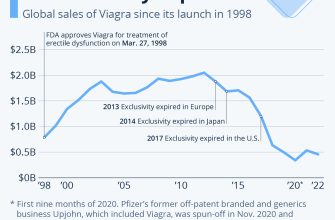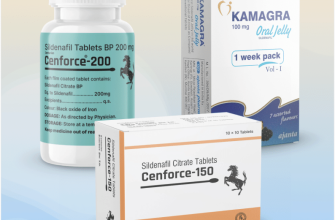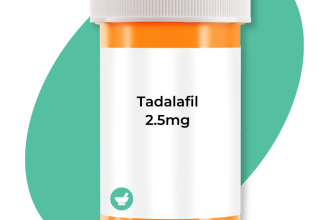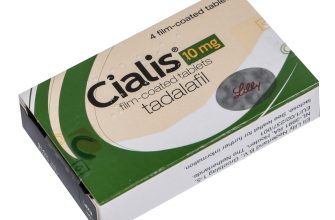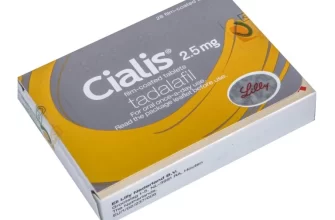Check your insurance plan’s formulary. This document lists covered medications and their tiers. Cialis, or tadalafil, may be listed under various names (e.g., generic tadalafil), so search thoroughly. Prior authorization might be required, meaning your doctor needs to submit additional paperwork for insurance approval.
Contact your insurance provider directly. They can confirm Cialis coverage, explain any cost-sharing details (like copays or coinsurance), and outline the prior authorization process. Ask about alternative medications if Cialis isn’t covered; your doctor can help find suitable options within your plan’s formulary.
Explore your plan’s prescription drug programs. Many insurance providers offer mail-order pharmacies or preferred pharmacies with lower costs. Utilizing these programs can significantly reduce your out-of-pocket expenses for Cialis. Compare prices; it’s worth the effort for potential savings.
Remember: This information serves as a general guide. Insurance policies vary greatly, so always verify coverage specifics with your insurance company.
Disclaimer: This information is for guidance only and does not constitute medical advice. Consult with your doctor or pharmacist for personalized recommendations.
- BPH and Cialis Coverage: A Detailed Guide
- Understanding Cialis and Benign Prostatic Hyperplasia (BPH)
- Cialis for BPH: Efficacy and Dosage Considerations
- Finding the Right Dose
- Efficacy Data
- Potential Side Effects
- Medication Interactions
- Alternative Treatments
- Monitoring Progress
- Insurance Coverage for Cialis: What to Expect
- Factors Affecting Cialis Insurance Coverage
- Prior Authorization and Step Therapy
- Generic Alternatives and Cost-Sharing
- Diagnosis and Medical Necessity
- Finding Affordable Cialis for BPH: Exploring Options
- Manufacturer Coupons and Savings Programs
- Pharmacy Comparison
- Generic Options
- Negotiating with Your Doctor or Pharmacy
- Consider a 90-Day Supply
- Sample Table: Cost Comparison (Illustrative Only)
- Exploring Patient Assistance Programs
- Navigating the Insurance Process: Tips and Resources
- Understanding Prior Authorization
- Exploring Cost-Saving Options
- Utilizing Online Resources
- Contacting Your Doctor and Pharmacist
- Understanding Your Explanation of Benefits (EOB)
BPH and Cialis Coverage: A Detailed Guide
Check your insurance plan’s formulary. This document lists covered medications and their tiers. Cialis’s coverage depends on your specific plan and tier.
Higher tiers generally mean higher out-of-pocket costs. Generic tadalafil, a Cialis equivalent, might be a more affordable option. Compare costs for both branded and generic versions.
Contact your insurance provider directly. They can confirm your coverage, explain cost-sharing details (copay, coinsurance), and clarify any prior authorization requirements.
Consider a prescription savings card. Many organizations offer cards that can reduce your Cialis costs, regardless of insurance coverage. Explore options online and compare discounts.
Explore manufacturer coupons or patient assistance programs. Cialis’s manufacturer may offer programs to help lower costs for eligible individuals. Check their website for details.
Negotiate with your pharmacy. Pharmacies sometimes have flexibility to reduce costs or offer payment plans. Don’t hesitate to ask about potential savings.
Review your plan’s benefits annually. Coverage can change yearly. Staying informed about updates ensures you understand your prescription drug costs.
Remember that individual circumstances vary. This guide offers general advice; consult your doctor and insurance provider for personalized guidance.
Understanding Cialis and Benign Prostatic Hyperplasia (BPH)
Cialis, a medication primarily known for treating erectile dysfunction, also effectively manages symptoms of benign prostatic hyperplasia (BPH). It relaxes the muscles in the prostate and bladder, improving urine flow.
How does it work? Cialis inhibits phosphodiesterase-5 (PDE5), an enzyme that breaks down cyclic GMP, a molecule crucial for smooth muscle relaxation. This leads to improved blood flow and reduced prostate muscle tension.
- Improved Urine Flow: Expect less straining, a stronger stream, and less frequent nighttime urination.
- Reduced Urinary Symptoms: You may experience fewer instances of urgency, hesitancy, and incomplete bladder emptying.
- BPH Symptom Severity: Cialis is more effective for managing milder to moderate BPH symptoms. Severe cases might require additional treatments.
Important considerations:
- Dosage: Your doctor will determine the appropriate dosage based on your individual needs and health conditions. Typical dosages range from 2.5mg to 5mg daily.
- Side Effects: Common side effects include headache, flushing, muscle aches, and nasal congestion. These are generally mild and temporary. Report any serious side effects to your doctor immediately.
- Interactions: Cialis may interact with other medications, particularly nitrates. Discuss all medications you are taking with your doctor before starting Cialis.
- Insurance Coverage: Insurance coverage for Cialis varies widely depending on your plan and specific circumstances. Check your plan’s formulary or contact your provider for details.
Remember to consult your doctor before starting any new medication, including Cialis, to ensure it’s the right treatment option for you and to discuss potential risks and benefits. Your doctor can help determine whether Cialis is appropriate for managing your BPH symptoms and address any concerns you may have.
Cialis for BPH: Efficacy and Dosage Considerations
Cialis (tadalafil) effectively treats benign prostatic hyperplasia (BPH) symptoms by relaxing bladder neck muscles and prostate muscles, improving urine flow. Dosage depends on individual needs and response, but typically starts at 5mg once daily.
Finding the Right Dose
Your doctor will likely start you on a low dose and adjust it based on your response. Common starting doses are 2.5mg or 5mg daily. Higher doses, such as 10mg or 20mg, are usually prescribed for erectile dysfunction, not generally for BPH.
- Important Note: Always follow your doctor’s instructions regarding dosage and frequency.
Efficacy Data
Studies show Cialis significantly improves symptoms associated with BPH. These improvements include increased urine flow rate, reduced urinary hesitancy, and decreased residual urine volume. The effect is usually observed within a few weeks of consistent use. Remember, individual results may vary.
Potential Side Effects
- Headache
- Muscle aches
- Back pain
- Nasal congestion
- Indigestion
These side effects are usually mild and temporary. Discuss any concerning side effects with your doctor.
Medication Interactions
Cialis can interact with certain medications, particularly nitrates. Always inform your doctor of all medications you are taking, including over-the-counter drugs and supplements, to avoid potentially dangerous interactions.
Alternative Treatments
While Cialis is a popular choice, other BPH treatments exist, including alpha-blockers and surgical options. Your doctor can help determine the best treatment for your specific condition and overall health.
Monitoring Progress
Regular check-ups with your doctor are crucial to monitor the effectiveness of Cialis and address any potential issues. This allows for timely adjustments to your treatment plan if needed.
Insurance Coverage for Cialis: What to Expect
Check your insurance plan’s formulary. This document lists covered medications and their respective tiers. Cialis, or its generic tadalafil, might be on your plan, but its coverage level (tier) significantly impacts your out-of-pocket costs.
Prior authorization may be required. This means your doctor needs to justify the prescription to your insurance company before they cover it. Prepare for potential delays if this is necessary. Contact your insurance provider directly to understand their specific process.
Generic tadalafil is usually cheaper. If your plan covers it, using the generic version can dramatically reduce your cost. Discuss this option with your physician.
Medicare Part D plans vary. If you’re on Medicare, coverage for Cialis depends entirely on your specific Part D plan. Compare plans carefully before selecting one; cost differences can be substantial.
Negotiate price. Contact your pharmacy or insurance company to explore potential discounts or financial assistance programs. Many manufacturers offer patient assistance programs.
Explore alternative medications. Your doctor may suggest other medications for BPH if Cialis proves too expensive. This is a viable option for managing your condition.
Review your Explanation of Benefits (EOB) carefully. This statement from your insurance company details your claims and out-of-pocket expenses. Scrutinize it for accuracy.
Factors Affecting Cialis Insurance Coverage
Your insurance company’s decision on Cialis coverage hinges on several key aspects. First, your specific insurance plan dictates what medications are covered. Check your formulary–a list of covered drugs–to see if Cialis is included. If it’s not, exploring alternative plans or contacting your provider about exceptions may be necessary.
Prior Authorization and Step Therapy
Many plans require prior authorization, demanding your doctor to justify the prescription’s medical necessity before approval. This often involves submitting detailed information. Similarly, step therapy may mandate trying less expensive medications first before Cialis is considered. Discuss these requirements with your doctor to expedite the process. Be prepared to provide medical history and details about other treatments.
Generic Alternatives and Cost-Sharing
Insurance companies generally prefer generic medications due to lower costs. Tadalafil, the generic form of Cialis, might be covered more readily or at a lower copay. Your plan’s cost-sharing structure–like your copay, deductible, and coinsurance–directly impacts your out-of-pocket expenses. Understanding these aspects is crucial for budget planning. Your benefits summary outlines these details.
Diagnosis and Medical Necessity
Your diagnosis plays a significant role. Insurance companies typically cover Cialis for treating benign prostatic hyperplasia (BPH) or erectile dysfunction (ED) only when medically necessary. Your physician must clearly document the need for Cialis in your treatment plan. Inadequate documentation often leads to rejection. Accurate diagnosis and supporting medical evidence are key to successful coverage.
Finding Affordable Cialis for BPH: Exploring Options
Check your insurance coverage first. Many plans cover Cialis for BPH, although coverage varies significantly by plan and location. Contact your insurance provider directly to determine your copay and whether pre-authorization is needed.
Manufacturer Coupons and Savings Programs
Tadalafil, the generic version of Cialis, is significantly cheaper. Explore manufacturer coupons and patient assistance programs for both brand-name Cialis and its generic counterpart. These programs often offer substantial discounts or copay assistance. Check the manufacturer websites directly for current offers.
Pharmacy Comparison
Prices for Cialis and Tadalafil fluctuate between pharmacies. Use online pharmacy comparison tools to find the lowest price in your area. Consider using mail-order pharmacies, which often offer lower costs due to higher volume purchasing power. Remember to factor in shipping costs.
Generic Options
Switching to Tadalafil, the generic version of Cialis, is a straightforward way to reduce costs. Generic medications contain the same active ingredient as brand-name drugs, but typically cost less. Your doctor can easily write a prescription for the generic.
Negotiating with Your Doctor or Pharmacy
Consider discussing your financial constraints with your doctor or pharmacist. They may be able to offer suggestions, such as alternative treatment options or suggest programs offering financial aid for medication.
Consider a 90-Day Supply
Purchasing a 90-day supply of medication often reduces the per-pill cost compared to purchasing a 30-day supply. This is a simple way to save money in the long run.
Sample Table: Cost Comparison (Illustrative Only)
| Medication | 30-Day Supply (USD) | 90-Day Supply (USD) |
|---|---|---|
| Brand-Name Cialis | $200 | $500 |
| Generic Tadalafil | $50 | $120 |
Note: Prices are for illustrative purposes only and may vary depending on your location, insurance coverage, and pharmacy.
Exploring Patient Assistance Programs
Many pharmaceutical companies offer patient assistance programs to help individuals afford their medications. Eligibility requirements vary, but these programs often cover a substantial portion of the medication costs. Research programs offered by Cialis manufacturers and independent organizations providing assistance.
Navigating the Insurance Process: Tips and Resources
First, check your insurance plan’s formulary. This document lists covered medications and their tiers. Higher tiers mean higher out-of-pocket costs. Understanding your plan’s coverage for Cialis or similar medications is crucial before seeking a prescription.
Understanding Prior Authorization
Many insurance plans require prior authorization for Cialis. This means your doctor needs to submit a request to your insurance company before they can prescribe the medication. Prepare for this; gather all necessary information beforehand, including your medical history and the reason for needing the medication. Failure to obtain prior authorization may result in denied claims.
Exploring Cost-Saving Options
If Cialis is expensive with your current plan, explore your options. Consider a 90-day supply instead of a 30-day supply – this often leads to lower per-pill costs. Look into manufacturer coupons or patient assistance programs. These programs offer financial aid to individuals who meet specific criteria. Contact your pharmacist or insurance provider for more information about these options.
Utilizing Online Resources
Your insurance company’s website usually has detailed information about your benefits and formulary. Use the member portal to review your coverage, check claim status, and find contact information for customer support. Many plans also provide online tools for pre-authorization requests, simplifying the process significantly. Remember to keep records of all communication with your insurance provider.
Contacting Your Doctor and Pharmacist
Your doctor and pharmacist are valuable resources. They can help determine the best course of treatment and guide you through the insurance process. They often have experience working with insurance companies and can offer tailored advice on cost-effective options.
Understanding Your Explanation of Benefits (EOB)
After receiving your prescription, review your Explanation of Benefits statement carefully. This document details your insurance coverage, payments, and any remaining costs. Understanding your EOB is key to tracking your prescription expenses and resolving any discrepancies.


